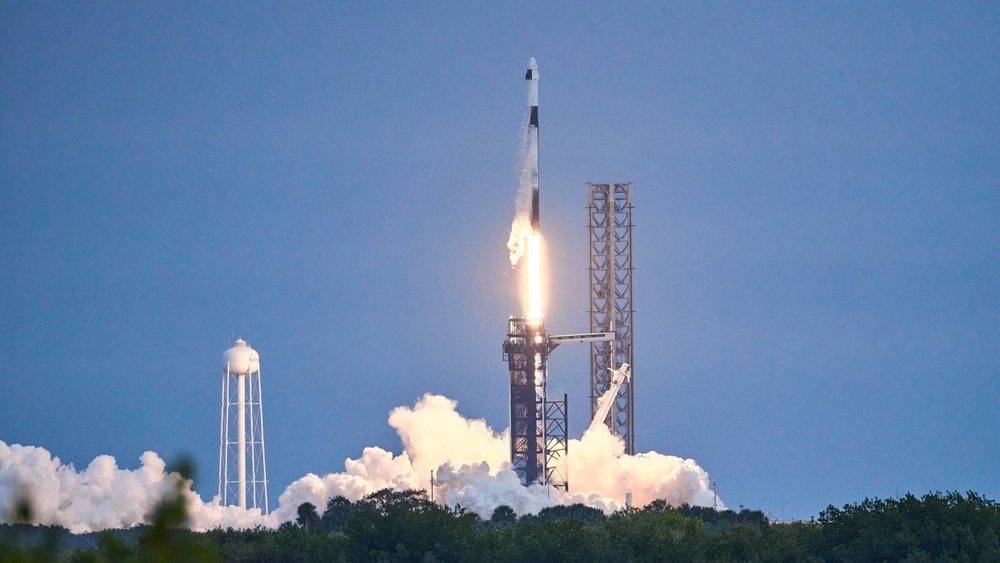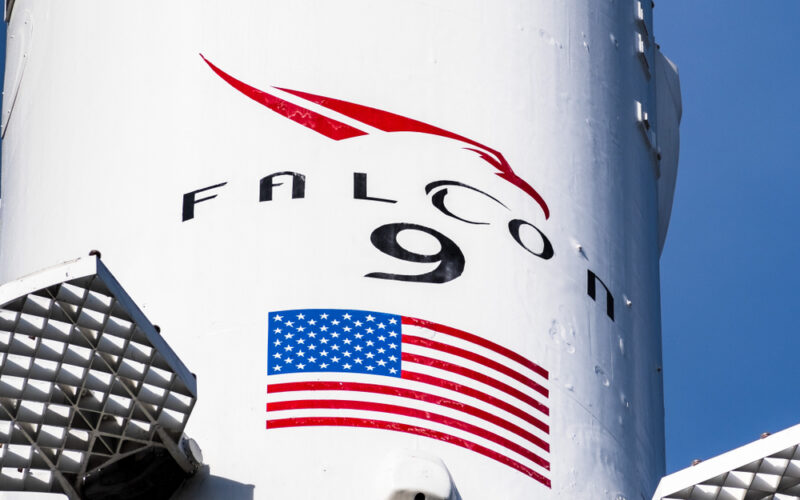SpaceX’s tight schedule for commercial satellite launches has been thrown off course following the loss of one of its Falcon 9 rockets after launch on July 11, 2024. Following the incident, the US Federal Aviation Administration (FAA) has grounded the rockets, potentially delaying future launches indefinitely.
Approximately one hour after the Falcon 9 had lifted off from the Vandenberg Space Force Base in California, United States, on the night of the launch, the rocket’s second-stage booster failed to reignite, which led to the loss of the rocket and its payload of 20 Starlink satellites.
Shown on SpaceX’s webcast live feed, the rocket’s launch ascent to orbit appeared to go as planned, with the first stage making a typical drone ship landing back on land. However, during the first burn of the second stage, observers on the ground noticed an unusual buildup of ice around the rocket’s Merlin engine cover, although this had not affected the rocket’s performance thus far.
The second stage was scheduled to perform a one-second burn of the engine 52 minutes and 20 seconds after liftoff to establish an orbit, followed by the deployment of the Starlink satellites. However, the SpaceX feed ended abruptly before this took place, with no comment being made at the time as to why. The cargo was eventually dispatched on a shallow orbital path where they are likely to re-enter the Earth’s atmosphere and burn up as they descend.
The accident represents the first failure of a Falcon 9 in over seven years and will come as a blow to both SpaceX and the wider commercial space launch industry that has come to rely on SpaceX to send satellites and other objects into space in recent years.
“The attempt to reignite the engine resulted in an engine RUD (Rapid Unscheduled Disassembly for reasons currently unknown,” SpaceX CEO Elon Musk wrote on July 12, 2024, on his social media platform X.
RUD is a term often used in the space industry for an inflight spacecraft explosion.
SpaceX later added that the rocket’s second stage’s failure occurred after engineers detected a leak of liquid oxygen, a fuel widely used by spacecraft.
As a result, SpaceX’s Falcon 9 rockets will remain temporarily grounded until SpaceX can fully investigate the cause of the failure. Only then will it be able to apply to the FAA to have the spacecraft’s ban lifted. However, given the unprecedented loss of the rocket on July 11, 2024, the process of getting Falcon 9s back in the air could take weeks or months. The exact time this process takes will depend largely on the nature and complexity of the issue that caused the loss in the first place.
Attempts to save the cargo
Although it is widely assumed that the loss of the satellites onboard the rocket was inevitable, according to Musk himself, attempts are being made by SpaceX to salvage them and return them to a useful orbit. He said that SpaceX experts were in the process of updating the software controlling the Starlink satellites to force their on-board thrusters to fire harder and longer than usual to avoid re-entry and burn-up.
“Unlike a Star Trek episode, this will probably not work, but it’s worth a shot,” Musk added.
Since the incident, NASA has issued a statement saying that the organization monitors all of SpaceX’s Falcon 9 missions and is working closely with SpaceX to determine the exact cause of the loss and to re-instate the launch program.

“SpaceX has been forthcoming with information and is including NASA in the company’s ongoing anomaly investigation to understand the issue and path forward,” a NASA spokesperson said.
While the launch that ended up in the loss of the Falcon 9 was an in-house mission for SpaceX, the wider space industry will be watching keenly as the investigation continues. Until then, all future launches will remain on hold with subsequent commercial launches backing up as a result.

